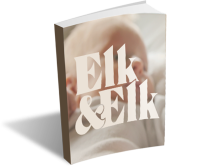Advanced Therapeutics for Babies Born with Brain Injury
Lack of oxygen to the brain during birth can cause damage to the cells of the brain and spinal cord. This oxygen deprivation in newborns causes hypoxic ischemic encephalopathy, HIE. HIE is responsible for physical and mental disabilities, developmental delay, cerebral palsy, or in extreme cases, death. When a baby experiences a brain injury at birth, immediate diagnosis and treatment are essential to a more favorable outcome.
Get A 100% Free CASE EvaluationThe treatment of infant brain injuries depends greatly on the extent of damage that occurred. An infant may suffer brain damage due to oxygen deprivation during labor or delivery. Any length of time with reduced oxygen to the brain will result in some damage to the brain cells. Lack of oxygen can happen for a number of reasons such as during a difficult delivery, when the baby is large, when delivery is prolonged, or when the baby becomes entangled in the umbilical cord.
Immediate Evaluation
Treatment for a newborn brain injury must begin as quickly as possible after birth. An evaluation of the infant must be made to determine the condition of the baby and to make decisions regarding treatment. Every baby is evaluated using the Apgar scale. This is a scoring system that scores newborns on a variety of factors and is completed by the physician or nurse during the first 1 to 5 minutes after birth.
- Apgar - The first Apgar score is made at 1 minute after birth and provides information as to how well the infant did during the birth process. The infant is scored again at 5 minutes after birth. The tests provide a quick overview of the body’s functions including breathing effort, heart rate, muscle tone, reflexes and skin color. Each area is scored between 0 through 2 with 0 being a low score for a category and 2 as the highest. For example, a baby born in respiratory distress would score 0 for breathing effort.
- Glasgow Coma Scale -Another important test for babies who have experienced a serious injury is the Glasgow Coma scale, GCS. The test is an integral assessment of impairment of conscious level based on the response to specific stimuli. The three main parts of the scale include assessment of eye opening, verbal response, and motor response. Reviewing the trends of the GCS performed at regular intervals helps doctors better evaluate a patient’s condition so that proper treatment is rendered.
Additionally, a CT scan may be necessary to make further determinations for treatment. In many cases, an immediate examination will provide the doctor with an assessment which will be used to treat the infant.
Conventional Treatment Methods
Some of the most common treatment methods for babies born with brain injuries provide for the support of the infant while the body works to repair itself. Some conventional treatments include high-frequency ventilation and supported breathing methods with the use of nitric oxide therapy. These methods are still utilized; however, they are often combined with therapeutic hypothermia, body cooling. In some cases, surgery is indicated to reduce swelling on the brain.
Therapeutic Hypothermia
Therapeutic hypothermia is a treatment that utilizes a reduction in body temperature as a method of slowing disease progression. Newborns who have experienced oxygen deprivation or asphyxia during labor or birth are candidates for this type of therapy. Lowering the body’s core temperature slows the metabolism and thus provides a better chance for the body to heal. Treatment is generally provided for the first 72 hours after birth.
Children who receive cooling treatment may have an improved outcome, particularly when administered immediately following birth. There are two main types of therapeutic hypothermia including whole body and head cooling. Whole body cooling utilizes a specially designed cooling blanket that provides controlled temperatures to the infant. In head cooling, a cooling cap fits over the infant’s head to reduce the body’s temperature. Cooling therapy must be provided within the first 6 hours after birth to be effective. It is often used in conjunction with traditional methods such as medications for a more successful outcome. Therapeutic hypothermia is administered only at a Neonatal Intensive Care Unit, NICU, with the necessary equipment.


